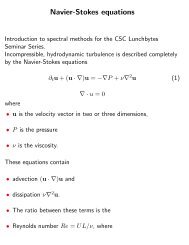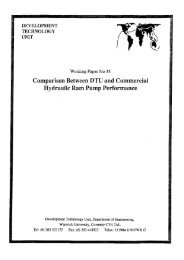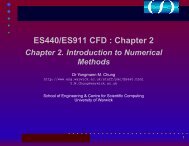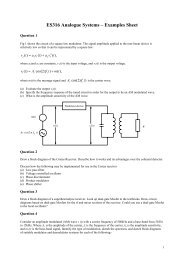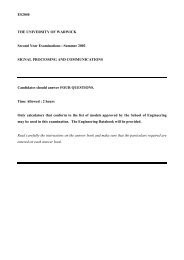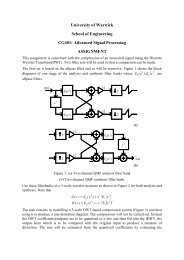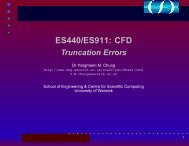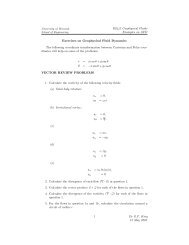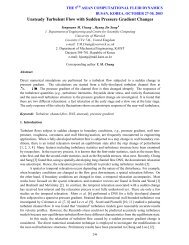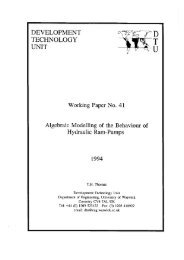Abstracts - KTH Mechanics
Abstracts - KTH Mechanics
Abstracts - KTH Mechanics
You also want an ePaper? Increase the reach of your titles
YUMPU automatically turns print PDFs into web optimized ePapers that Google loves.
v<br />
Wind Turbine Wake Structures<br />
J. N. Sørensen a<br />
Modern wind turbines are often clustered in wind parks in order to reduce the<br />
overall installation and maintenance expenses. An unwanted effect, however, is that<br />
the turbulence intensity in the wake is increased because of the interaction from the<br />
wakes of the surrounding wind turbines. As a consequence, dynamic loadings are<br />
increased that may excite the structural parts of the individual wind turbine and<br />
enhance fatigue loadings. The turbulence created from wind turbine wakes are mainly<br />
due to the dynamics of the vortices originating from the rotor blades. The vortices are<br />
formed as a result of the rotor loading. To analyse the genesis of the wake, it is thus<br />
necessary to include descriptions of the aerodynamics of both the rotor and the wake.<br />
Although many wake studies have been performed over the last two decades, a lot of<br />
basic questions still need to be clarified in order to elucidate the dynamic behavior of<br />
individual as well as multiple interactive wakes behind wind turbines 1 .<br />
In the past years the author and his group has developed a numerical technique for<br />
studying wind turbine wakes 2 . In this model the gross flow field around the rotor is<br />
simulated by the Navier-Stokes equations, using either direct or large eddy simulation,<br />
with the rotor loading represented by body forces. This technique enables to study<br />
wake dynamics without having to resolve in detail the viscous boundary layer of the<br />
rotor blades. The computational results are compared to experiments and analysed for<br />
their content of organized anisotropic and coherent structures. The computations<br />
form the background for the development of a low-dimensional wake turbulence<br />
model based on proper orthogonal decomposition.<br />
In the presentation we show and discuss recent results from simulations of single<br />
and multiple wakes (see the figure below 3 ) and demonstrate how they can be used to<br />
create low-dimensional turbulence models. Furthermore, we present a new analytical<br />
wake model based on helical vortices 4 .<br />
a DTU Fluid <strong>Mechanics</strong>, Bldg. 403, DK-2800 Lyngby, Denmark.<br />
1 Vermeer et al., Progress in Aerospace Sciences, 39, 467 (2003).<br />
2 Sørensen and Shen, J. Fluids Engineering, 124, 393 (2002).<br />
3 Troldborg et al., European Wind Turbine Conference, EWEC 2006, Athens (2006).<br />
4 Okulov and Sørensen, submitted J. Fluid Mech., (2006).<br />
o<br />
Figure 1: Development of wake formed by three rotors in a row inclined 9.6 .



